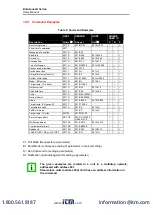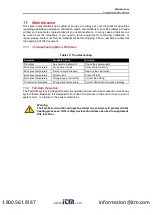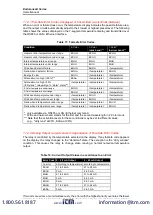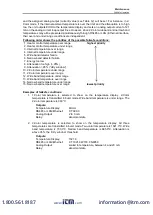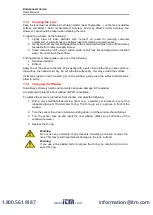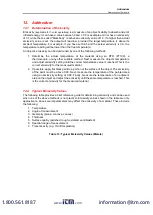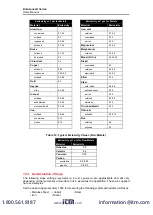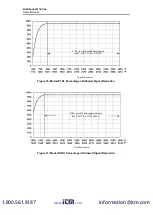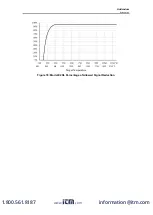
Addendum
Attenuation
95
Set the slope to approximately 1.060 for measuring the following metals with smooth, clean,
unoxidized surfaces:
• Iron
• Nickel
• Tantalum
• Stainless Steel • Rhodium
• Tungsten
• Cobalt
• Steel
• Molybdenum
• Platinum
Molten iron also has an approximate slope setting of 1.060.
How to determine slope?
The most effective way to determine and adjust the slope is to take the temperature of the
material using a probe sensor such as an RTD, thermocouple, or other suitable method. Once
you determine the actual temperature, adjust the slope setting until the sensor’s temperature
reads the same as the actual temperature reading. This is the correct slope for the measured
material.
12.4. Attenuation
Three causes may contribute to the loss of IR signal from the target:
1. Low target emissivity
2. Target is too small to fill the measured spot size
3. The optical path is partially obstructed
– as with smoke, steam, dust, a dirty window, or
solid obstructions
The total reduction in signal is the sum of the losses from all three causes. The specified
attenuation
is how much reduction in signal the instrument can handle and still achieve an
accurate temperature measurement.
Example: An instrument has a specification of 95% for the signal attenuation.
Assume a target with Emissivity = 0.45 equivalent to 45% signal and corresponding to 55%
signal loss (100% - 45% = 55%)
Transmissivity = 0.0
=> Another 40% maximum can be lost due to an unresolved target and/or obstructions in the
field of view.
The following figures
show each sensor model’s percentage of allowed signal reduction at all
temperatures. Refer to these graphs to estimate what percentage of target area must be visible
to the sensor at temperatures below the minimum temperature (95% attenuation) as shown in
this manual.
sensors see polluted atmosphere and dirty windows and lenses as
a reduction in energy and give much lower than actual temperature
www.
.com
information@itm.com
1.800.561.8187








